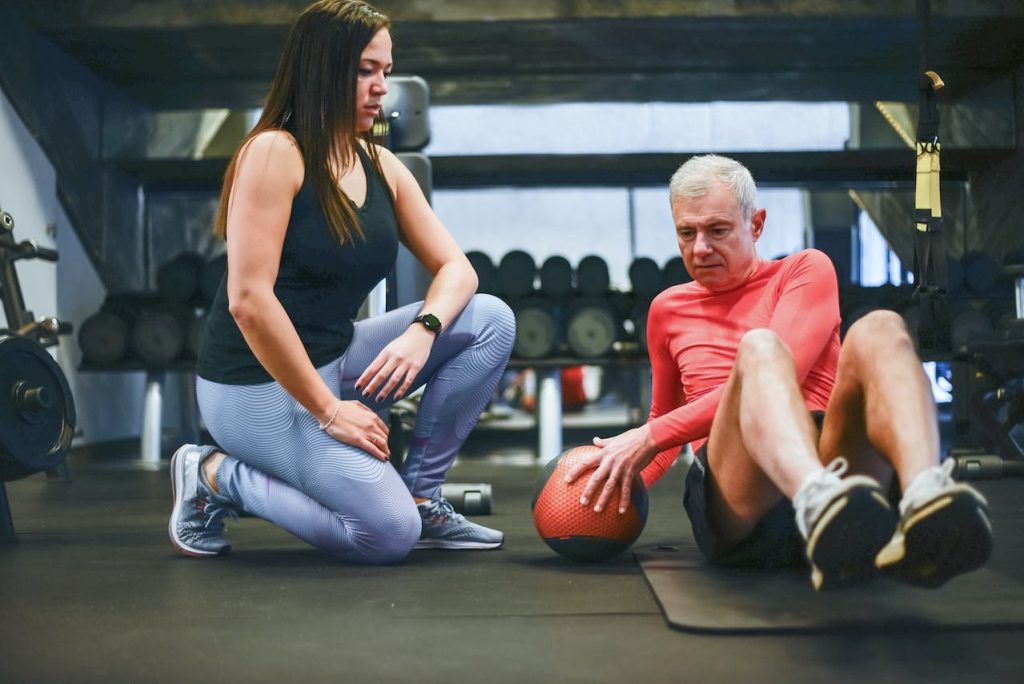As individuals age, maintaining balance and stability becomes increasingly critical. Balance exercises offer an effective way for senior citizens to improve stability, prevent falls, and foster independent living. These exercises are essential components of a comprehensive fitness program, addressing common senior health problems they face, such as a decrease in muscle strength, flexibility, and coordination. Moreover, balance exercises not only enhance physical health but also contribute to cognitive well-being. This article explores the importance of balance exercises and provides some expert tips for senior citizens to incorporate them into daily routines.
Importance of Balance and Stability in Old Age
Maintaining balance and stability in old age is of paramount importance, playing a crucial role in the overall quality of life for seniors. As people age, their bodies naturally change, such as reductions in muscle mass and bone density, which can hinder balance and mobility. Declining eyesight and impaired proprioception (the ability to sense one’s body position in space) can further exacerbate balance issues.
Consequently, seniors are at a heightened risk of falls, which are a leading cause of injury and loss of independence among this group. By incorporating balance exercises into their routine, seniors can counteract these risks, improving their stability and coordination. This not only aids in preventing accidents and falls but also supports them in performing everyday activities more efficiently and safely, enhancing their independence and overall quality of life.
What are Balance Exercises?
Balance exercises are specific workouts designed to strengthen the muscles that help you maintain your balance while standing or moving. These exercises target primarily the lower body, including the legs, hips, and core, and involve activities that challenge your balance, such as standing on one foot, heel-to-toe walk, or leg lifts.
The primary purpose of balance exercises is to enhance stability and coordination, thus preventing falls and injuries, particularly in senior citizens. Moreover, these exercises can improve overall mobility, enhancing the ability to perform daily activities independently. This is especially crucial for seniors, as improved mobility can significantly improve their quality of life and independence.
Types of Balance Exercises
Balance exercises can be classified into three primary categories: static, dynamic, and strength-based.
- Static Balance Exercises: These exercises involve maintaining a stable position for a prolonged period, usually while standing or sitting. They are ideal for beginners and individuals with severe balance issues. Examples include standing with feet together or standing on one foot.
- Dynamic Balance Exercises: Dynamic exercises require movement while maintaining stability. These activities are more challenging and are designed to improve balance during motion. Dynamic balance exercises include heel-to-toe walking, tandem walking, or stepping over objects.
- Strength-Based Balance Exercises: These exercises strengthen the muscles critical for maintaining balance, such as the legs, hips, and core. Strength training into balance exercises can enhance stability and mobility, making everyday tasks easier for seniors. Squats, leg lifts, and core strengthening exercises fall under this category.
Each exercise plays an integral role in improving balance and should be incorporated into a senior citizen’s fitness routine, depending on their specific needs and capabilities. Always remember to consult a healthcare professional before starting any new exercise regimen.
Why Should Senior Citizens Perform Balance Exercises?
Senior citizens face several specific challenges when it comes to maintaining balance. As the human body ages, it naturally experiences a decline in muscle strength and bone density, which are crucial for maintaining balance. This degeneration makes seniors prone to instability and falls.
Additionally, aging often brings about conditions such as arthritis and osteoporosis, further affecting mobility and balance. Age-related conditions like diabetes and heart disease can also lead to balance disorders, as they affect the circulatory system and impede the body’s ability to deliver adequate oxygen and nutrients to the muscles. Cognitive decline, another factor in aging, impacts balance as well, as it can reduce a senior’s ability to focus, thereby affecting their coordination.
Lastly, certain medications commonly prescribed to seniors can also have side effects such as dizziness or weakness, ultimately affecting their balance. Thus, for senior citizens, managing balance can indeed be a multifaceted challenge.
Aging and its Impact on Balance and Stability
The process of aging inherently affects an individual’s balance and stability. As you age, your muscle mass and strength diminish, and the efficiency of your nervous system declines. These factors combined lead to decreased mobility and stability. Moreover, the sense of proprioception, one’s perception of the position and movement of the body, deteriorates with age. This decline impacts your ability to navigate your surroundings and respond to changes in terrain or sudden shifts in direction, thereby increasing the risk of falls.
Aging also affects the vestibular system, the part of your inner ear and brain that processes sensory information to control balance and eye movements. Age-related changes in this system, such as decreased blood flow and degeneration of receptors or nerves, can lead to vestibular disorders, causing dizziness, vertigo, and balance problems.
Bone density also reduces with age due to the natural process of bone resorption being more pronounced than bone formation, leading to conditions like osteoporosis, which increases the risk of fractures, especially from falls.
Furthermore, age-related vision changes and ailments, including macular degeneration, glaucoma, or cataracts, can significantly impact balance. Visual cues are crucial for maintaining balance, and any impairment can decrease spatial awareness, making it challenging to negotiate obstacles, thereby increasing the likelihood of falls.
All these factors combined illustrate why balance can become a critical issue as people age and underscore the importance of balance exercises for seniors. These exercises can help counteract these age-related changes, improving stability and reducing the risk of falls.
Benefits Of Balance Exercises For Seniors
Apart from improved stability, there are many other advantages to incorporating balance exercises into a senior citizen’s fitness routine. These include:
Improved Balance and Stability
Balance exercises are pivotal in enhancing overall stability, particularly in seniors. By challenging the body’s balance mechanisms, these exercises stimulate and strengthen the muscles essential for maintaining equilibrium, such as those in the legs and core. Regular practice of these exercises can lead to significant improvements in muscle strength, coordination, and reflexes, which are crucial for maintaining balance.
Furthermore, these exercises can help enhance proprioceptive skills, aiding individuals in becoming more aware of their body’s position in space and improving stability. Overall, balance exercises not only help in building physical resilience against falls and injuries but also foster a greater sense of confidence and independence among senior citizens, enabling them to navigate their daily lives with more ease and assurance.
Fall Prevention
Falls are a significant health risk for older adults, with potentially severe consequences ranging from fractures to a loss of independence. Balance exercises play a critical role in fall prevention among senior citizens. These exercises work by strengthening the lower body muscles and improving stability, which are key to maintaining balance. Increased muscle strength allows seniors to react and adjust their body position when they stumble or trip, thereby preventing a fall.
Additionally, better stability reduces the likelihood of falls by enhancing body control during movement and stationary positions. Balance exercises also improve proprioception, the body’s ability to perceive its position in space, which can assist seniors in navigating uneven or unfamiliar terrain safely. By routinely performing balance exercises, seniors can significantly lower their risk of falls and related injuries, thereby maintaining their independence and quality of life.
Over 14 million or one in four older adults report falls annually in the United States, making it the leading cause of injury for adults aged 65 and older. Approximately 3 percent of these falls result in injuries requiring medical treatment or activity restrictions, accounting for an estimated nine million fall injuries.
Increased Mobility and Independence
Improved balance invariably leads to enhanced mobility in senior citizens, fostering greater independence in their daily lives. A strong sense of balance allows for more sure-footedness and confidence in movement, facilitating activities like walking, climbing stairs, or even standing from a seated position, activities that can often pose a challenge for seniors. The increased muscle strength and coordination resulting from regular balance exercises enable seniors to perform these daily tasks more efficiently and safely.
Furthermore, improved balance aids in navigating varied terrains and overcoming obstacles, whether stepping over a curb, walking on an uneven sidewalk, or moving through crowded spaces. By bolstering balance and mobility, seniors can maintain their independence, continue their routine activities, and experience a better quality of life.
Enhanced Muscle Strength
Balance exercises, while primarily aimed at improving stability, also contribute significantly to muscle strength. These exercises often engage multiple muscle groups simultaneously, particularly those in the lower body and core, which are crucial for maintaining balance. As individuals perform these exercises, their muscles work against gravity to stabilize their body, building strength. Over time, as these muscles become stronger, individuals may find it easier to perform everyday tasks that require strength, such as lifting objects, climbing stairs, or rising from a chair.
Additionally, stronger muscles contribute to improved posture and overall body mechanics, further enhancing stability and balance. Therefore, balance exercises serve dual purposes, fostering improved stability while supporting muscle strength and functional fitness.
Cognitive Benefits
Balance exercises not only contribute to physical health but also offer significant cognitive benefits, particularly for senior citizens. As people age, cognitive abilities such as attention, memory, and spatial orientation may deteriorate, impacting balance and coordination. Regular balance exercises stimulate cognitive functions by requiring concentration, coordination, and spatial awareness. This engagement aids in preserving cognitive abilities and can even improve mental agility. Exercise can boost neuroplasticity, the brain’s capacity to form and reorganize synaptic connections. This is vital for maintaining and enhancing cognitive functions.
Additionally, engaging in physical activity, including balance exercises, contributes to better sleep and reduced stress and anxiety levels, all associated with improved cognitive functioning. Thus, the connection between balance exercises and cognitive health is profound and multifaceted, underscoring the comprehensive benefits of these exercises for seniors.
Social Engagement
One often overlooked aspect of balance exercises for seniors is the potential for social engagement they provide, particularly when conducted in a group setting. Group balance exercise classes allow seniors to interact and form bonds with their peers, fostering community and camaraderie. These connections can enhance motivation, make exercises more enjoyable, and can even lead to improved adherence to the exercise routine.
Moreover, these classes provide a safe and supportive environment for seniors to engage in physical activity. Trained instructors can guide participants through the exercises, ensuring they are performed correctly and safely, and can modify exercises to accommodate varying fitness levels or physical limitations.
In addition to the physical health benefits, social interaction can have significant positive effects on mental and emotional well-being. It can combat loneliness and isolation, common issues for many seniors. Furthermore, the sense of achievement gained from improving balance and strength can boost self-confidence and foster a positive mindset. All in all, group balance exercise classes can offer a comprehensive suite of benefits, making them an excellent option for seniors seeking to improve their balance, fitness, and overall quality of life.
Bottom Line
In conclusion, the advantages of balance exercises for senior citizens are manifold. They help to mitigate the natural decline in balance and stability that accompanies aging by strengthening essential muscles and enhancing proprioception. As a result, seniors can enjoy improved mobility and increased independence in their daily lives.
Moreover, these exercises significantly reduce the risk of falls, a major concern for this age group. The added benefits of enhanced muscle strength and cognitive health further emphasize the significance of balance exercises in the wellness regimen of senior citizens. Lastly, the potential for social engagement in group balance classes offers additional mental and emotional benefits, contributing to a better quality of life for seniors.






